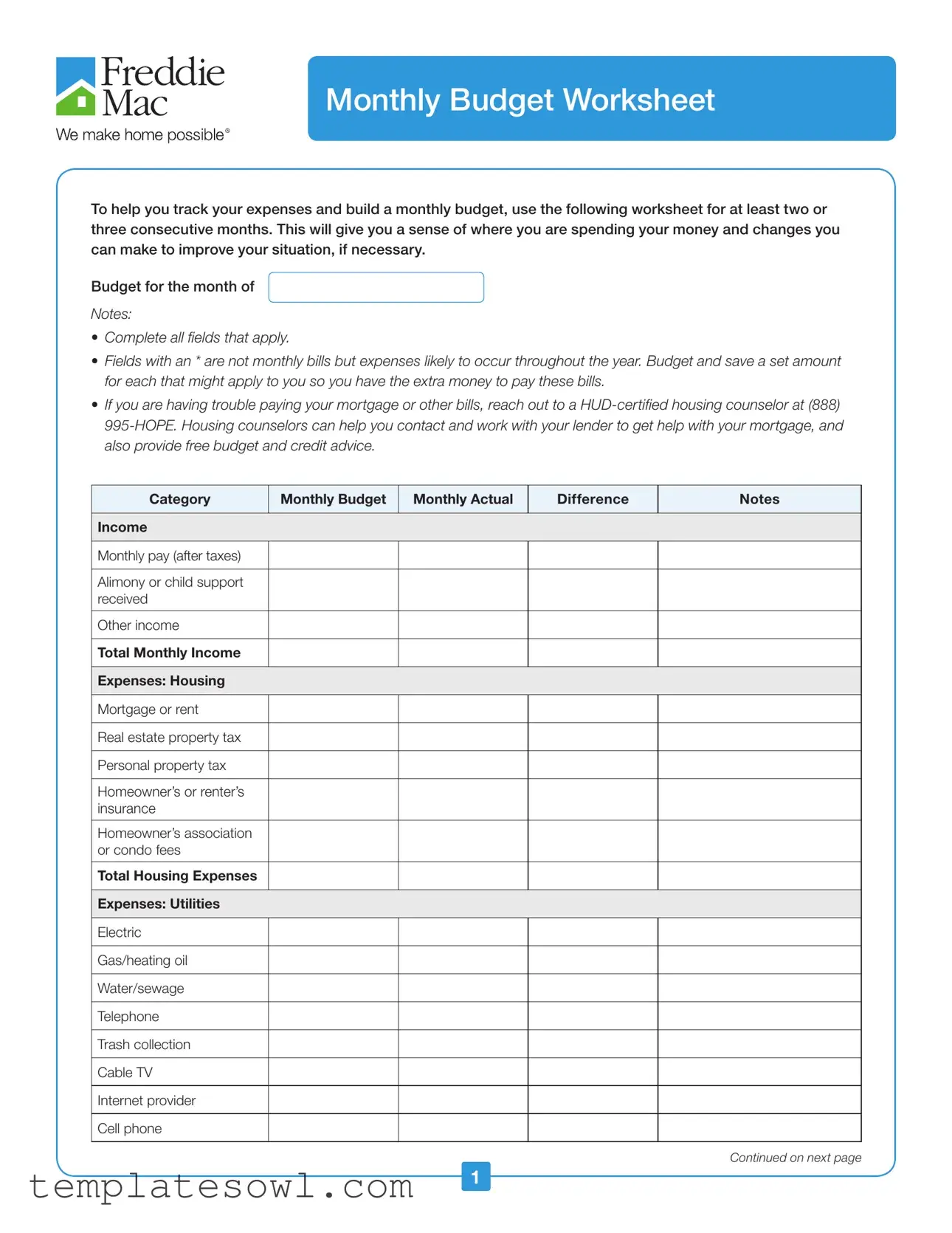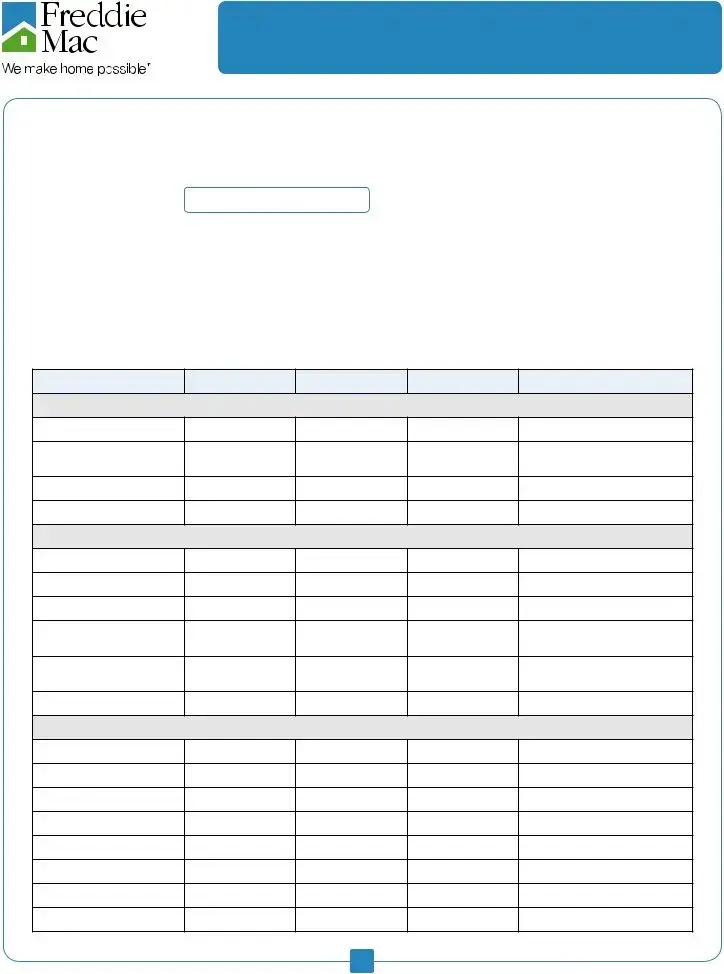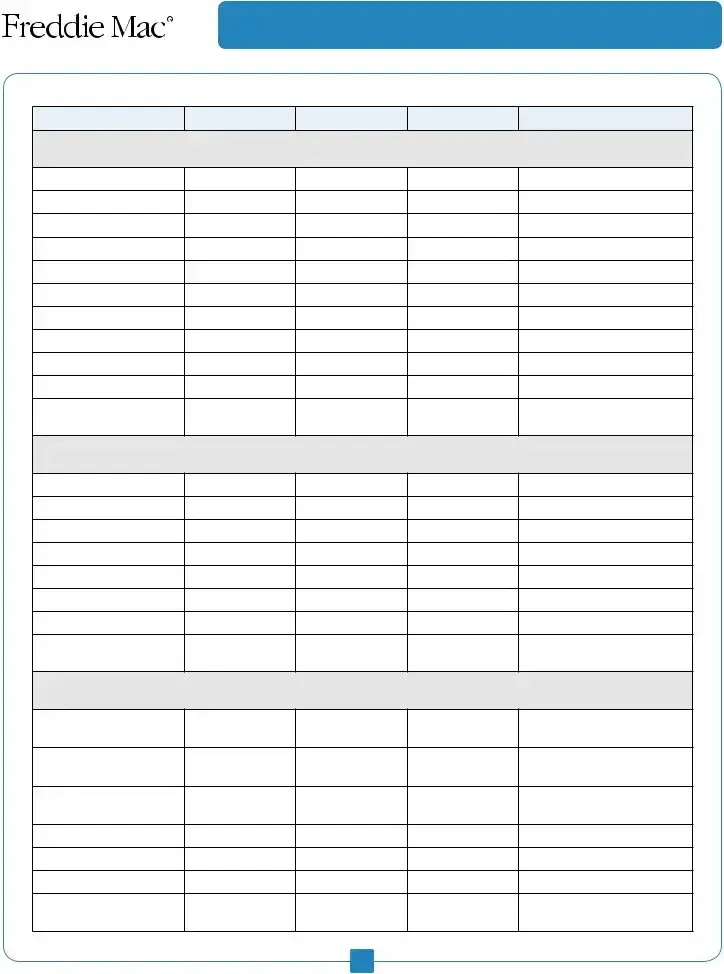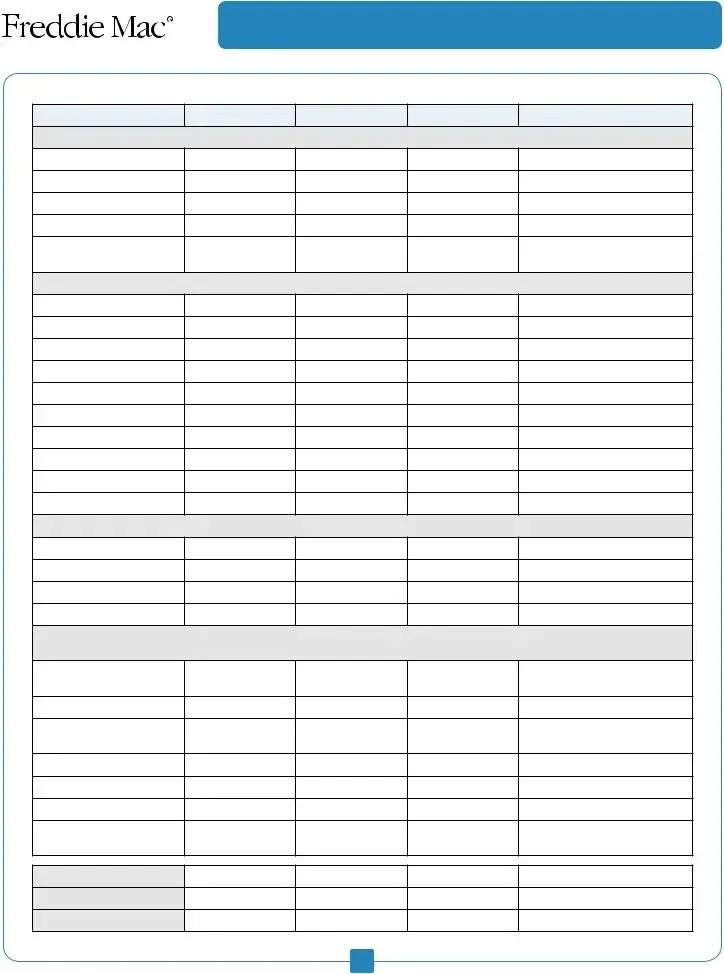What is the purpose of the Monthly Budget Worksheet?
The Monthly Budget Worksheet is designed to help individuals track their expenses and establish a monthly budget. By using this worksheet over a period of two or three months, users can identify spending patterns and areas where adjustments may be necessary, thus improving their financial situation.
How do I fill out the Monthly Budget Worksheet?
To complete the worksheet, fill in all applicable fields for both income and expenses. Start by documenting your total monthly income. Next, list out each category of expenses, such as housing, utilities, and transportation. Be sure to note any expenses that occur less frequently by budgeting a set amount for those. This will facilitate easier payment when those expenses arise.
What types of income should be included in the worksheet?
Include all sources of income that you receive on a monthly basis, such as your pay after taxes, any alimony or child support, and additional income like freelance work or investments. Ensure that the total accurately reflects your financial situation.
What expenses should I categorize using the worksheet?
Expenses should be categorized into sections such as housing, utilities, health/medical, transportation, food, children, personal expenses, and savings. Each category should include line items that reflect your specific spending habits and needs, including both regular monthly bills and annual expenses.
What are the “*” fields mentioned in the worksheet?
Fields marked with an asterisk (*) indicate expenses that are not monthly bills but are likely to occur throughout the year. These could include medical expenses or car maintenance costs. It is advisable to budget and save a set amount for these expenses to ensure that you can cover them when they arise.
How can I track my actual spending against my budget?
Each month, record your actual spending in the designated area next to the budgeted amount. After documenting your expenses, calculate the difference to see how well you adhered to your budget. This will help you evaluate areas where you may need to adjust either your spending or your budget planning.
What should I do if I find it difficult to pay my mortgage or bills?
If you are experiencing trouble with mortgage payments or other bills, consider reaching out to a HUD-certified housing counselor at (888) 995-HOPE. Housing counselors can provide guidance, assist in negotiating with lenders, and offer free advice on budgeting and credit management.
How can I manage irregular or large expenses within my budget?
Managing irregular or large expenses starts with recognizing their potential impact on your finances. The worksheet allows you to set aside funds monthly for anticipated large expenses, such as home repairs or holiday gifts. By planning ahead, you can ensure that you have the necessary funds when those expenses arise.
What should I do if my actual expenses exceed my budgeted amounts?
If you find that your actual expenses exceed your budgeted amounts, it may be beneficial to review your spending habits. Analyze which categories are consistently exceeding budgets and determine if they are essential or if adjustments can be made. It may also be necessary to recalibrate your budget to reflect realistic spending practices.
How often should I review my budget?
Regularly reviewing your budget each month is essential. Consistent evaluations allow you to stay aware of your financial health and make informed decisions. As your income or expenses change, updating your budget will help you to remain on track toward achieving your financial goals.



